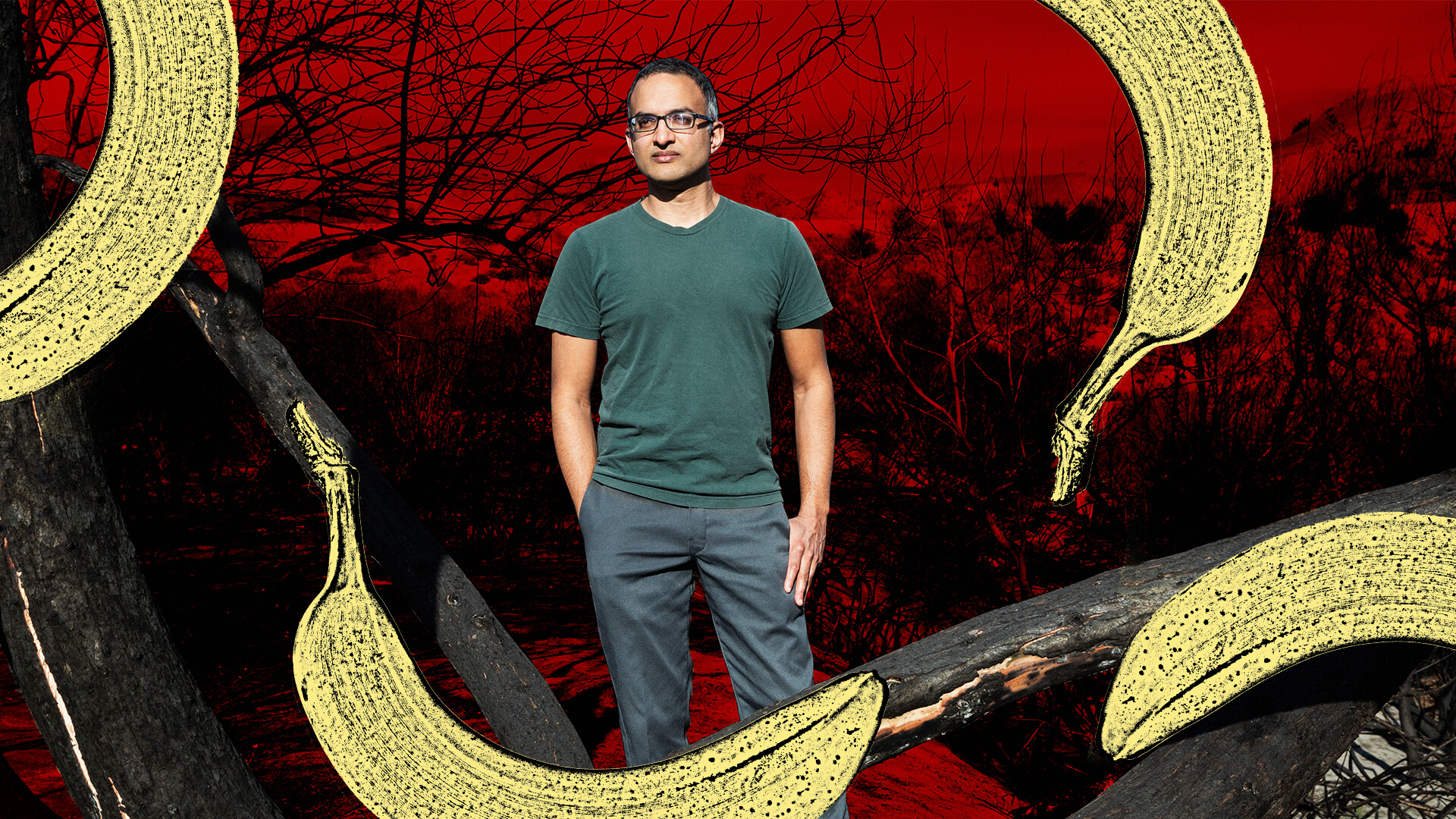Fighting Fire with…Bananas?
IN THE FIGHT against wildfires, we may have an unlikely ally: banana trees. According to Barath Raghavan, a USC Viterbi assistant professor of computer science, banana orchards could provide crucial wildfire protection for high-risk communities while turning a profit.
Working with Michael Kantar, an agriculture expert at the University of Hawaii, Raghavan’s team ran computer models and found that banana orchards could slow or stop the spread of wildfire entering a neighborhood.
That’s because banana trees have a unique property: Since they don’t contain wood, they are almost completely nonflammable. As such, embers that land in the orchards have time to burn out. What’s more, this “edible fire buffer” can provide food and a source of revenue, as well as potentially reduce insurance costs for protected communities.
“We’ve modeled how large that banana orchard would need to be to slow or completely stop wildland fire from entering a neighborhood,” said Raghavan, a horticulture enthusiast who has grown hundreds of fruit and vegetable varieties at home. “This isn’t going to stop fire tornadoes, it’s not going to stop thunderclouds that are formed by fires, but it has the potential of slowing the fire spread into urban areas. And that’s the key.”
A sustainable, multifunctional landscape
From 1984 to 2015, wildfires have nearly doubled in frequency in the western United States, according to the Center for Climate and Energy Solutions. California in particular faces major risks associated, with more than 4 million homes existing in areas where fires regularly occur.
“The wildland-urban interface is at high risk in California today, and getting riskier as the planet warms and we experience more extremes,” Raghavan said. “Reducing carbon emissions is essential, but not enough. Even if we stopped tomorrow, there are decades of future warming baked into the global climate system already.”
While increasing fire risk, climate change is also decreasing food production in existing agricultural regions. Raghavan, whose previous work with Kantar includes designing sustainable farms, had a thought: Can we create a multifunctional landscape, where we change the landscape so it has many benefits? In this case: food production and wildfire reduction at the same time.
So far, so horticultural. So where does the computer science come into play?
“It’s a computer science problem because it looks at how we can reconfigure our land to get many beneficial uses out of it, including food, fire mitigation, erosion control and biodiversity,” Raghavan explained. “It’s essentially a land planning question that presents so many variables, it must be approached as a computer science problem.”
Digging for fire
As far as Raghavan knows, this is the first study of its kind. Initially, he thought the concept might be too simple — or too “hokey,” he said — to work. But after bouncing the idea off Kantar, they decided it was worth a shot.
After selecting banana trees (turmeric and ginger were close runners-up), Raghavan teamed up with Kantar to model how big a banana orchard would need to be to stop a wildfire in its tracks. In addition to their fire-retardant qualities, banana trees flourish in the relatively frost-free climates of Southern California and milder parts of Northern California.
First, the pair simulated the 2017 Northern California Tubbs Fire, the most devastating fire in the state’s history at the time. Then, they started introducing buffer firebreaks into the simulation to see what would have happened when strong winds blew tiny embers into urban areas. When the results came in, Raghavan’s theory was vindicated.
They found a medium-sized banana buffer — 633 meters wide, or the size of about six football fields — significantly mitigated the fire’s spread, catching and dissipating the embers. Specifically, it reduced the urban burn rate by a third to a half, even under predicted climate change in year 2090. The buffer would also have provided a three-hour delay in the arrival of the Tubbs fire to the urban threshold, giving firefighters more time to save property and even lives.
In addition, Raghavan and Kantar estimate that banana buffers in California would turn a profit of about $25,000 per acre, per year, which could be funneled back into the community.
To pilot the project, the pair plans to work with fire districts and homeowners associations in the greater Los Angeles area. Raghavan plans to start in the Orange County hills and parts of the Hollywood Hills and Santa Monica Mountains at lower elevations.
With last fall’s devastating fires offering a stark reminder of what’s at stake, he hopes to implement this plan sooner rather than later, and has already been talking to city governments to gather data on recycled water infrastructure.
While he’s usually circumspect, Raghavan is confident about this intervention and its potential to help prevent wildfire spread. “There’s very little uncertainty in my mind as to whether the approach will work,” he said.




